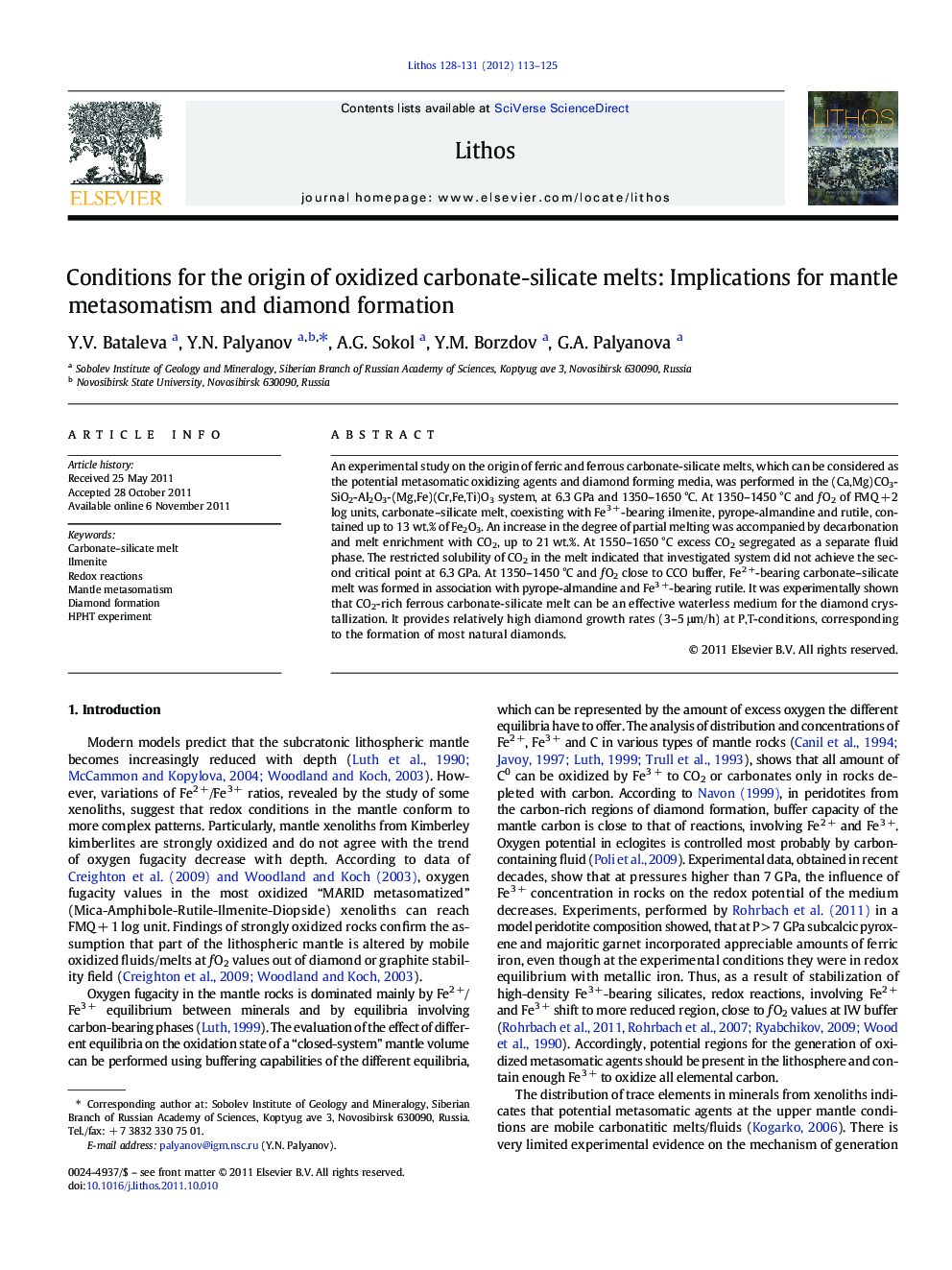| Article ID | Journal | Published Year | Pages | File Type |
|---|---|---|---|---|
| 4716684 | Lithos | 2012 | 13 Pages |
An experimental study on the origin of ferric and ferrous carbonate-silicate melts, which can be considered as the potential metasomatic oxidizing agents and diamond forming media, was performed in the (Ca,Mg)CO3-SiO2-Al2O3-(Mg,Fe)(Cr,Fe,Ti)O3 system, at 6.3 GPa and 1350–1650 °C. At 1350–1450 °C and ƒO2 of FMQ + 2 log units, carbonate–silicate melt, coexisting with Fe3 +-bearing ilmenite, pyrope-almandine and rutile, contained up to 13 wt.% of Fe2O3. An increase in the degree of partial melting was accompanied by decarbonation and melt enrichment with CO2, up to 21 wt.%. At 1550–1650 °C excess CO2 segregated as a separate fluid phase. The restricted solubility of CO2 in the melt indicated that investigated system did not achieve the second critical point at 6.3 GPa. At 1350–1450 °C and ƒO2 close to CCO buffer, Fe2 +-bearing carbonate–silicate melt was formed in association with pyrope-almandine and Fe3 +-bearing rutile. It was experimentally shown that CO2-rich ferrous carbonate-silicate melt can be an effective waterless medium for the diamond crystallization. It provides relatively high diamond growth rates (3–5 μm/h) at P,T-conditions, corresponding to the formation of most natural diamonds.
► Generation of ferric and ferrous carbonate-silicate melts in HPHT experiments. ► Metasomatic interactions, involving mantle silicates, oxides, CO2 fluid and melt. ► Ferrous carbonate-silicate melt in a role of a potential media for diamond growth. ► Ferric carbonate-silicate melt as oxidizing metasomatic agent in the mantle.
